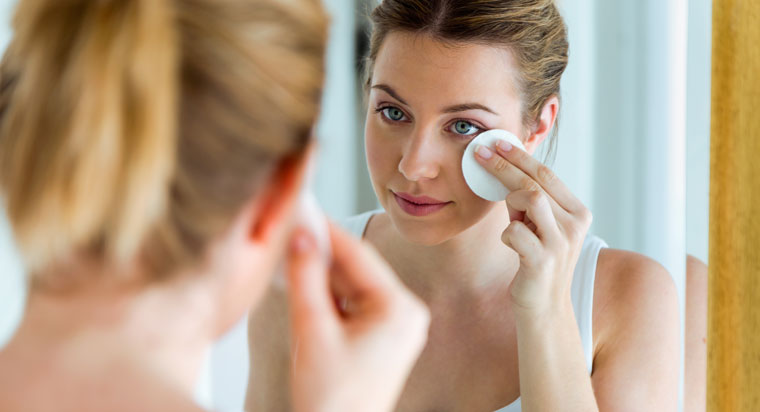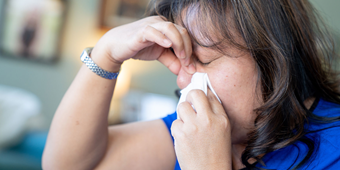A Close-up Look At Styes And Chalazia

Answer a few questions and we'll provide you with a list of primary care providers that best fit your needs.
It’s almost predictable. A few days before a big event, you wake up with a red bump on your eye. People cautiously stare at you like you’re carrying the zombie plague. While the unwelcome intruder is likely “only” a stye, you want it gone … and fast.
A stye is more uncomfortable than it is harmful. Still, prompt care and treatment are important since a stye can develop into a chalazion, which takes longer to go away and can cause blurred vision.
How To Tell the Difference
The main symptoms of styes and chalazia (plural of chalazion) differ by pain, size, and where they form on the eyelid.
A stye is a small, red, painful bump that forms near the edge of your eyelashes, either on the eyelid (external) or inside it (internal).
A chalazion is a firm bump or cyst that forms most commonly in the skin of your upper eyelid. It’s typically larger, not painful, and appears farther back on the eyelid than a stye.
Styes often cause your eyelid to swell, your eye to water, and the feeling of having something in your eye.
They can cause crusting on your eyelid and sensitivity to light. Styes typically go away in about a week.
Chalazia may look like styes since they sometimes become red and swollen, but they are usually larger (pea size) and rarely cause eyelid swelling. Chalazia can grow large enough to cause blurry vision and typically go away in about a month, although they can recur.
What Causes Styes And Chalazia?
Most styes are caused by a bacterial infection in an eyelash root (follicle). Infection also may occur in one of the tiny oil-producing glands inside the eyelid (internal stye). If an internal stye doesn't drain and heal, it can turn into a chalazion.
Generally not an infection, a chalazion forms when an eyelid oil gland becomes blocked.
These conditions can make you more susceptible to styes and chalazia:
- Blepharitis (a common problem that causes eyelid inflammation)
- History of styes or chalazia
- Skin condition, such as acne, rosacea, or seborrheic dermatitis
- Diabetes or other medical problems
- Tuberculosis
- Viral infection
Tips For Stye And Chalazion Prevention
The best way to protect your peepers from styes and chalazia is to practice good eye hygiene:
- Disinfect contact lenses correctly with a contact lens cleaning solution.
- Don’t share makeup with others.
- Discard makeup that’s six months old (three months for mascara).
- Don’t use over-the-counter medicines, drops, or ointments without first checking with your doctor.
- Keep your eyes clean by removing makeup and dirt.
- Keep your hands clean, and don’t rub your eyes since this can irritate them and let in bacteria.
- Protect your eyes from dust and air pollution, especially when mowing or raking your lawn.
- Treat eyelid inflammation or infection promptly.
- Wash your eyelids regularly with baby shampoo and warm water if you get styes or chalazia often.
Stye And Chalazion Treatment
A good dose of patience and perseverance goes a long way in treating styes and chalazia. While they may go away on their own, you can speed the healing with these home treatment methods:
- Apply warm, wet compresses for 10 to 15 minutes, three to five times each day for several days to soften bumps and help them drain. This also may help soften hardened oil that’s blocking ducts. Styes typically drain in about three days. Use caution to avoid burning your delicate eyelid.
- Ask your pharmacist to recommend over-the-counter ointment, solution, or medicated pads.
- Avoid touching or rubbing your eye.
- Don't attempt to squeeze, pop, lance, or drain a stye or chalazion. Let them drain on their own and keep them clean.
- Gently massage the area around a chalazion to help unblock the gland.
- Don't wear eye makeup or contact lenses until your stye or chalazion has healed.
Contact your doctor if a stye doesn’t go away after about 10 days, if a chalazion doesn’t drain and heal within a month, or for any of the following symptoms:
- An eyelid that swells shut
- Increased pain
- Increased swelling after the first two to three days
- An eyelid that feels hot
- Thick pus or blood coming from the bump
- Blistering on your eyelid
- Fever or chills
- Vision changes
- Styes that keep coming back
Answer a few questions and we'll provide you with a list of primary care providers that best fit your needs.
Source: American Academy of Ophthalmology; American Optometric Association; FamilyDoctor.org; Styes and Chalazia, Healthwise, 5/9/2019




